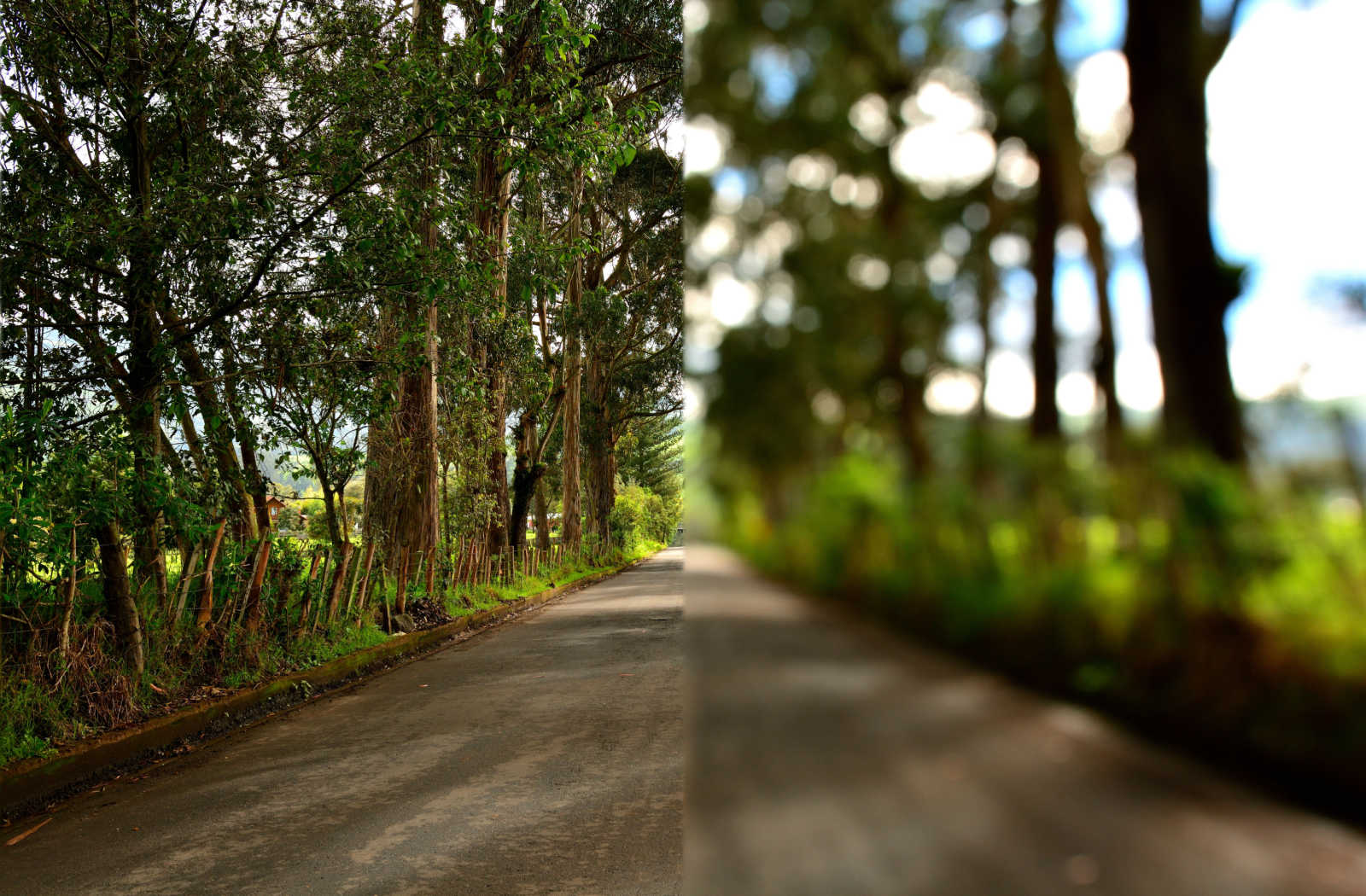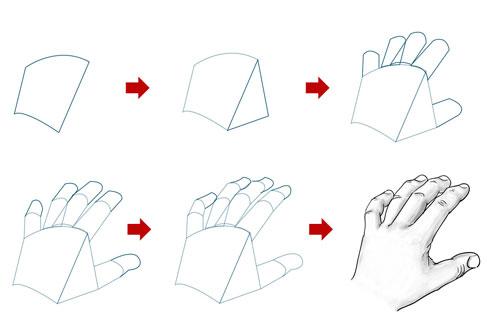Whether you’re a fine artist, photographer, designer, or simply someone curious about how visual perception works, learning to “see like an artist” can transform the way you create. Many beginners feel intimidated by complex details, but squinting and other free techniques simplify the visual world into manageable shapes, tones, and colors. By practicing these habits in daily life—during commutes, film-watching, or sketch sessions—you sharpen your ability to recognize form and composition. It’s a zero-cost, flexible, and powerful way to build artistic confidence and clarity
Introduction
Picture yourself standing on a crowded street, overwhelmed by the sheer detail—signboards shouting in bright colors, windows reflecting the sun, cars weaving between pedestrians. Now, slowly lower your eyelids until your vision blurs. Suddenly, the chaos melts away. What was once overwhelming is now reduced to large, simple shapes: dark blocks of shadow, glowing rectangles of light, patches of color. You are no longer staring at “things”—you’re seeing forms.
This simple act of squinting is far more than a reflex. It’s a free, instant, and powerful way to train your eye to perceive like an artist. By filtering out unnecessary details, squinting allows you to focus on the fundamentals that shape every visual experience—form, tone, proportion, color, and depth. And unlike expensive classes or tools, it’s something you can practice anywhere, anytime.
Whether you dream of painting portraits, capturing striking photographs, designing fashion silhouettes, or directing visual stories, learning to “see like an artist” through squinting is a foundation that strengthens every creative discipline.
Who This Is For & Why It’s Helpful
Anyone engaged in visual communication can benefit from sharpening the way they see. Fine artists and illustrators often struggle with translating the complexity of life onto a flat surface. Photographers and videographers need to anticipate how light, form, and tone will translate through the lens. Graphic designers must ensure that hierarchy and readability work at first glance. Fashion designers and stylists rely on silhouettes and color harmony to make a bold impact. Set designers and art directors need clarity of form and balance to guide an audience’s eye.
For beginners, the fear of details often becomes paralyzing—drawing a face feels impossible when you’re worried about every eyelash. Squinting cuts through that fear by simplifying the subject into manageable pieces. For professionals, it acts as a quick diagnostic tool, revealing whether their work holds up in terms of proportion, contrast, and visual flow.
In other words, this habit helps everyone—student, hobbyist, or professional—gain clarity and confidence by learning to recognize forms, values, and structures before being lost in details.
Why Squinting Works
At first, squinting may sound like a childish trick—but it’s actually a highly effective tool for visual perception. When you partially close your eyes, you remove unnecessary detail and reduce the amount of light entering your pupils. This forces your vision to group information into larger, simpler masses. Instead of being distracted by textures, tiny lines, or surface noise, you begin to see the essential building blocks: light and dark, large versus small, near versus far.
Squinting collapses complexity into clarity. It allows artists to:
Distinguish basic 2D and 3D forms (circle, square, cylinder, cube, cone, sphere).
Perceive tones and values—the degree of lightness or darkness—without being distracted by surface detail.
Notice color temperature and saturation, as exaggerated differences often pop when blurred or softened.
Judge proportions, perspective, and depth more accurately, since extraneous details don’t interfere.
In essence, squinting helps you see what really matters first—the foundation—before getting carried away by secondary details. Think of it as adjusting your mental lens to prioritize structure over surface.
How to Squint the Right Way
Not all squinting is equally helpful. Done correctly, it sharpens your artistic perception. Done poorly, it just strains your eyes. The goal is not to shut your eyes completely but to narrow them just enough to blur the fine details while keeping overall shapes and contrasts visible.
Step-by-step technique:
Relax your face – soften your gaze rather than forcing your eyelids shut.
Partially close your eyes until the image loses sharp edges but major forms remain distinguishable.
Shift your focus slightly—don’t stare hard, instead let your eyes relax into a semi-defocused state.
Scan for essentials – look for big shapes, tone patterns, directional light, and major contrasts.
What to look for:
The darkest and lightest areas.
Simplified silhouettes and masses.
Relative size and proportion of forms.
Warm vs. cool color zones.
What to avoid:
Over-squinting to the point of near blindness.
Locking onto one tiny detail instead of the whole composition.
Using squinting as an excuse to skip careful observation later—this is only the first pass.
Squinting is best thought of as a filter. It strips away distractions so you can make better decisions about composition, values, and relationships before committing to detail work.

Applications Across Creative Fields
The beauty of squinting is that it’s not limited to painters. It’s a universal tool for anyone working visually.
1. Drawing & Painting
Squinting helps identify big value masses, preventing the common mistake of over-focusing on eyelashes, buttons, or textures too early. It’s a way to keep compositions strong and cohesive before diving into detail.
2. Photography
Photographers can squint through the viewfinder or at a scene to check if light and dark areas balance well. If a subject is still visible and clear when squinting, the shot likely has strong composition and contrast.
3. Graphic Design
Designers use squinting to test whether layouts communicate hierarchy at a glance. Headlines, main visuals, and call-to-actions should still stand out when blurred—ensuring clarity even at reduced sizes or quick viewing.
4. Fashion & Set Design
Costume and stage designers use squinting to judge how silhouettes read from afar. Squinting helps them ensure proportions and contrasts remain effective under stage lighting or in motion.
5. Everyday Visual Skills
Even outside professional art, squinting builds awareness of how you see the world. Noticing shapes, tones, and contrasts in everyday life can improve your spatial sense, memory, and appreciation of visual balance.
Squinting, in short, is not a gimmick but a transferable skill that strengthens visual judgment across multiple domains.

Integrating Squinting into Daily Practice
Like any skill, squinting becomes more effective when practiced regularly. The key is to make it a natural part of your seeing habits rather than a forced exercise.
1. Warm-Up Routine
Before beginning a drawing, painting, or design project, spend a minute squinting at your subject or reference. This helps you set the foundation of light, shadow, and big shapes before diving in.
2. Mid-Process Check
When you feel stuck or overwhelmed by details, step back and squint at your work. This allows you to see if the core composition still holds strong or if adjustments are needed.
3. Daily Observation
Incorporate squinting into everyday life—when looking at a sunset, a busy street, or even your food plate. This strengthens your visual instincts and helps train your brain to notice form and balance quickly.
4. Pairing with Photography or Thumbnails
Take a quick photo of your work-in-progress and squint at the image on your phone. Or, sketch tiny thumbnails and squint to test whether the design reads clearly at a small scale.
5. Avoiding Over-Squinting
Like any tool, squinting works best in balance. Overuse can strain your eyes and may disconnect you from the finer details needed later. Think of it as a lens you switch on and off at key stages of your process.
By treating squinting as a simple habit rather than a technique, it blends seamlessly into your workflow—enhancing clarity, confidence, and efficiency over time.
Daily Practice Guide: Training Your Artist’s Eye
1. Squint Scan (2 min)
Reduce everyday objects to 2–3 simple forms.
For illustrators: Blur your vision to simplify a crowded street scene into blocky silhouettes. This helps avoid over-detailing.
For photographers: Squint at your subject to spot bold compositions (mountains as triangles, people as vertical lines).
For UI/UX designers: Test if icons or buttons still “read” when viewed in a squint — ensures clarity in small sizes.
2. Value Hunt (3 min)
Find the darkest dark and lightest light in a scene.
For painters: In a still life, identify the deepest shadow and the highlight on glass. This sets your tonal scale.
For cinematographers: On a film set, check whether the lighting creates enough separation between subject and background.
For graphic designers: Evaluate posters to see if text stands out against its background value.
3. Color Temperature Check (2 min)
Compare warm vs. cool undertones.
For interior designers: Notice if a white wall leans blue (cool) or cream (warm). Helps balance ambiance.
For makeup artists: Observe how natural light shifts skin tone — cooler in shade, warmer under direct sun.
For photographers: Train eyes to see how morning light differs from golden hour.
4. Negative Space Quick Look (3 min)
Study the shapes around objects.
For logo designers: Check if surrounding empty space creates balance or unintended forms.
For sculptors: Look at gaps between limbs or materials to refine proportions.
For architects: Notice the “voids” created by buildings and their effect on skyline rhythm.
5. Perspective Walk (5 min)
Observe converging lines and depth cues during a walk.
For urban sketchers: Study how lamp posts, roads, and fences vanish toward a point.
For 3D modelers: Practice aligning imagined vanishing points to real-life architecture.
For VR/game designers: Observe how human sight perceives depth, then apply it in virtual environments.
6. Media Check-in (5 min)
Squint at posters, films, or magazine spreads to test focus hierarchy.
For advertisers: Does the brand logo still dominate when blurred? If not, the hierarchy fails.
For filmmakers: Pause a frame and squint — what stands out first? If the subject doesn’t, reframe lighting/composition.
For illustrators: Blur your work-in-progress to see if the main subject pops or blends in.
7. Thumbnail Sketch Drill (10 min)
Make tiny sketches of only the big shapes.
For concept artists: Capture mood and silhouette of a scene before detailing.
For fashion designers: Rough out the overall garment silhouette before worrying about textures.
For product designers: Sketch the outline of a chair or gadget in five variations quickly — form first, details later.
Conclusion: Seeing Clearly, Thinking Simply
Squinting may seem like a small and almost childlike gesture, but its impact on how we perceive and create is profound. By stripping away distractions, it teaches us to see the essential structure beneath the surface—whether in art, design, problem-solving, or everyday choices. It is a reminder that clarity often comes not from adding more, but from removing the noise.
For artists, it ensures strong compositions. For thinkers, it sharpens focus. And for anyone feeling overwhelmed, it offers a simple, portable way to bring things back into perspective. The beauty of squinting lies in its accessibility: no tools, no training, just the willingness to pause, soften the gaze, and trust what emerges when the unnecessary fades away.
Resources for Further Exploration
If you’d like to deepen your understanding of visual perception and artistic seeing, explore these:
Drawing on the Right Side of the Brain by Betty Edwards
Articles on Gestalt principles of design
Tutorials on tonal studies and value sketches (search: “value painting basics”)
The Elements of Color by Johannes Itten
Free resources on perspective drawing (YouTube, design blogs, art education forums)
Photography guides on light and shadow analysis
Websites and platforms:
www.tate.org.uk (art insights and learning)
www.artsy.net (artworks and visual studies)
www.creativebloq.com (design inspiration)
www.photographylife.com (light and color guides)
Support Meda Foundation
Like all the other articles, this one has been made possible through the support of patrons. If you found it helpful or inspiring, please consider donating to the Meda Foundation. Your support enables the creation of more resources like this, accessible to all.
Additionally, we welcome your stories and insights. Share your knowledge and experiences with us through the feedback form — your voice helps expand the conversation.
.









